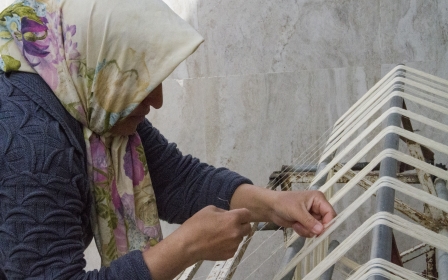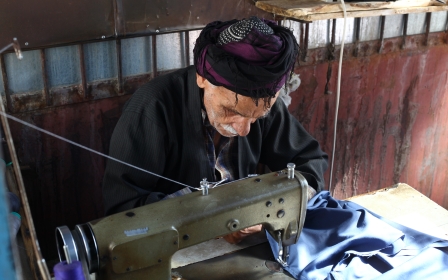
In pictures: How a Palestinian woman keeps the ancient craft of kohl alive

Hadia Qudeih watches as a piece of natural cloth soaked with olive oil burns down to ashes, which she will use to make traditional Arab kohl. The 64-year-old has been making the black pigment in the backyard of her home in Khan Younis, in the southern Gaza Strip, for decades. (Credit: Sanad Abu Latifa)
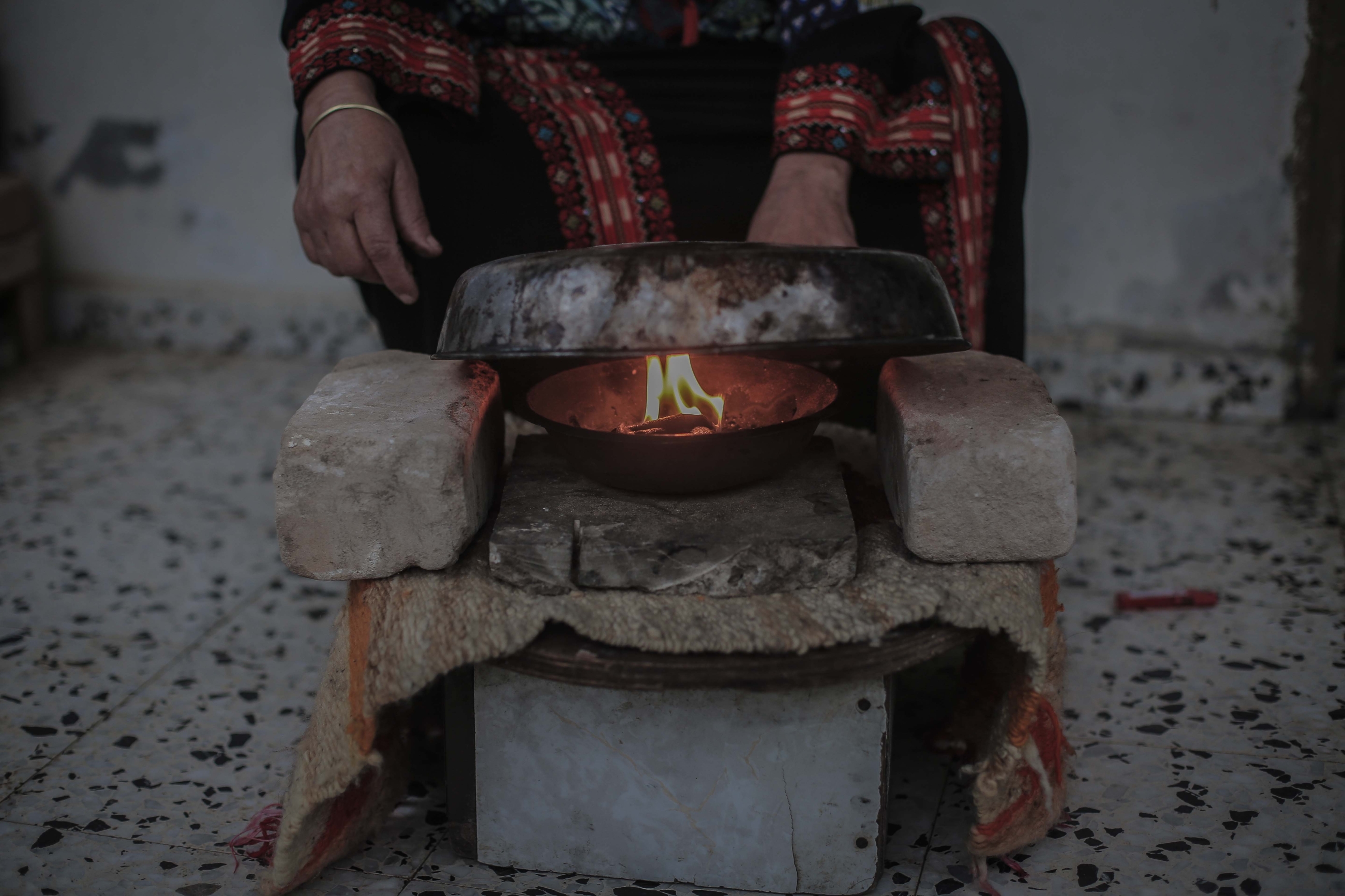
She was taught the craft by her mother more than 55 years ago. “Before Israel occupied Gaza, when I was in the fourth grade, I came back from school one day to find my mother burning a piece of cloth in an iron pot. I asked her what she was doing and she told me this is how kohl is made,” Qudeih told Middle East Eye. “I was mesmerised by how a piece of cloth could turn into ashes used as makeup, and asked her to teach me how to do it.” (Credit: Sanad Abu Latifa)

To prepare the kohl, Qudeih collects wood and burns it until it turns into coal, before using it to heat the oil and set light to the piece of cloth. She then covers the iron pot with a metal plate to keep the dark smoke inside the pot, and waits until the cloth turns into dark black ashes that she puts in small jars. “Not any type of cloth can be used to make kohl, the one available in the markets contains nylon and chemical substances, while the one used for kohl must be pure fabric,” Qudeih says. (Credit: Sanad Abu Latifa)
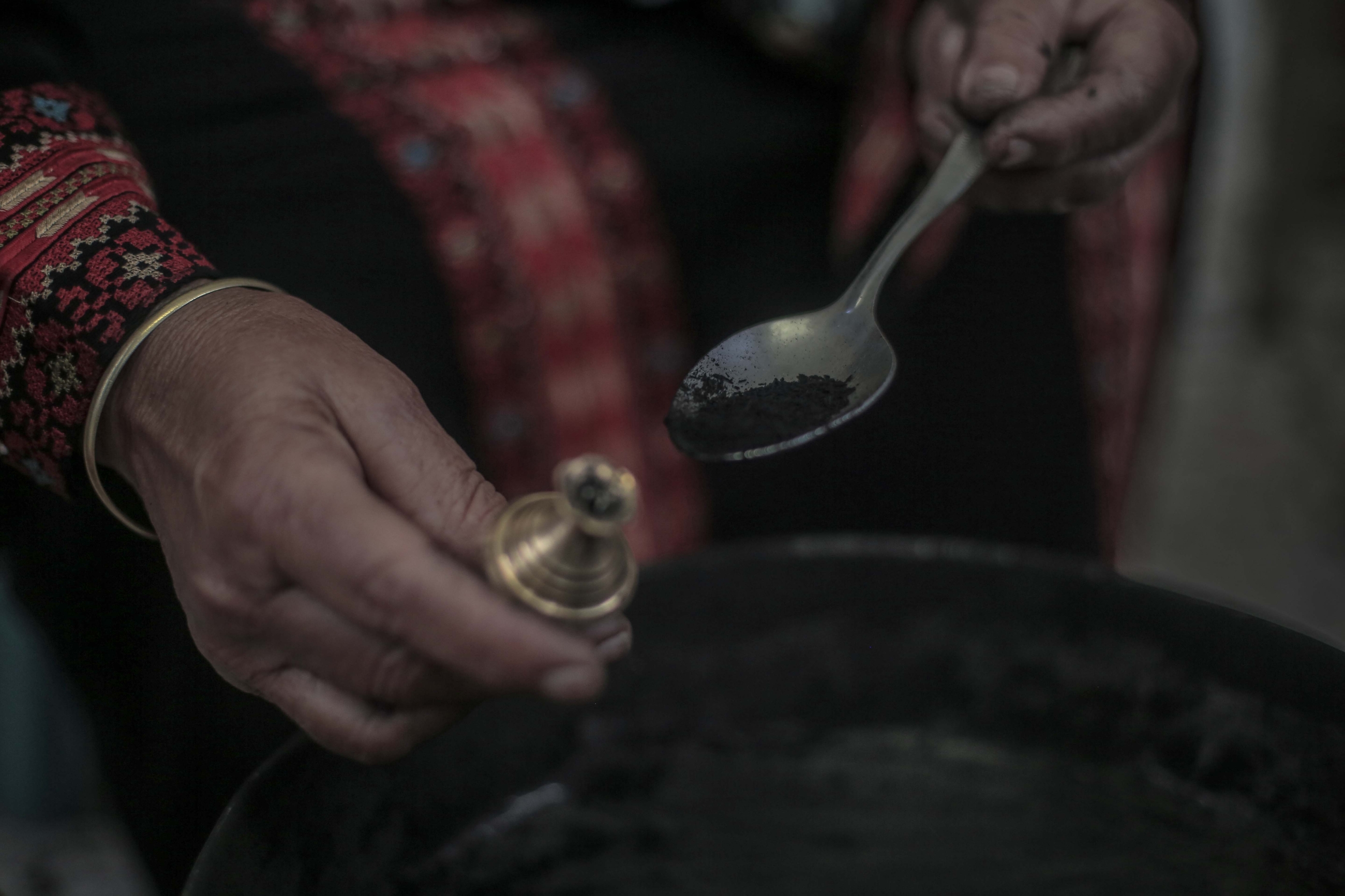
“The process of making kohl usually takes about half an hour, or a bit more, to fill one small kohl jar,” she told MEE. “But no matter how long it takes, I always enjoy making it, especially because my grandchildren gather around me to watch how it is done.” (Credit: Sanad Abu Latifa)

Cosmetics to beautify the eyes have been used for thousands of years. Arab kohl dates back to the Ancient Egyptians and communities in Western Asia, as the first recorded eyeliner-like substance in history, worn by both men and women. It was made of soot, lampblack mixed with grease, antimony (a crystalline metallic element), or ashes mixed with oil, and applied by a thin stick or needle. (Credit: Sanad Abu Latifa)

Another Gazan woman, Um Khaled Yusuf, 65, told MEE that she used to watch her mother applying kohl as a form of make-up to attend weddings and celebrations. “During the sixties, women were more interested in the beauty of the eye, so they relied mainly on Arab kohl as it was a form of Arab and Palestinian tradition,” she said. “Some women did not use make-up for religious reasons. But when it came to kohl, they believed it was not haram (forbidden), since they believed Prophet Muhammad used kohl and recommended people to use it.”
Although its formula has differed over the years, Qudeih says she still sticks to the old traditional kohl, and teaches her daughter and granddaughters to use it instead of modern eyeliner. (Credit: Sanad Abu Latifa)

In some parts of the world, kohl is believed to have protective qualities and families encourage children to use it. Qudeih says that for years she has applied Arab kohl to “almost every newborn” in her neighbourhood “to protect their eyes from diseases”. (Credit: Sanad Abu Latifa)
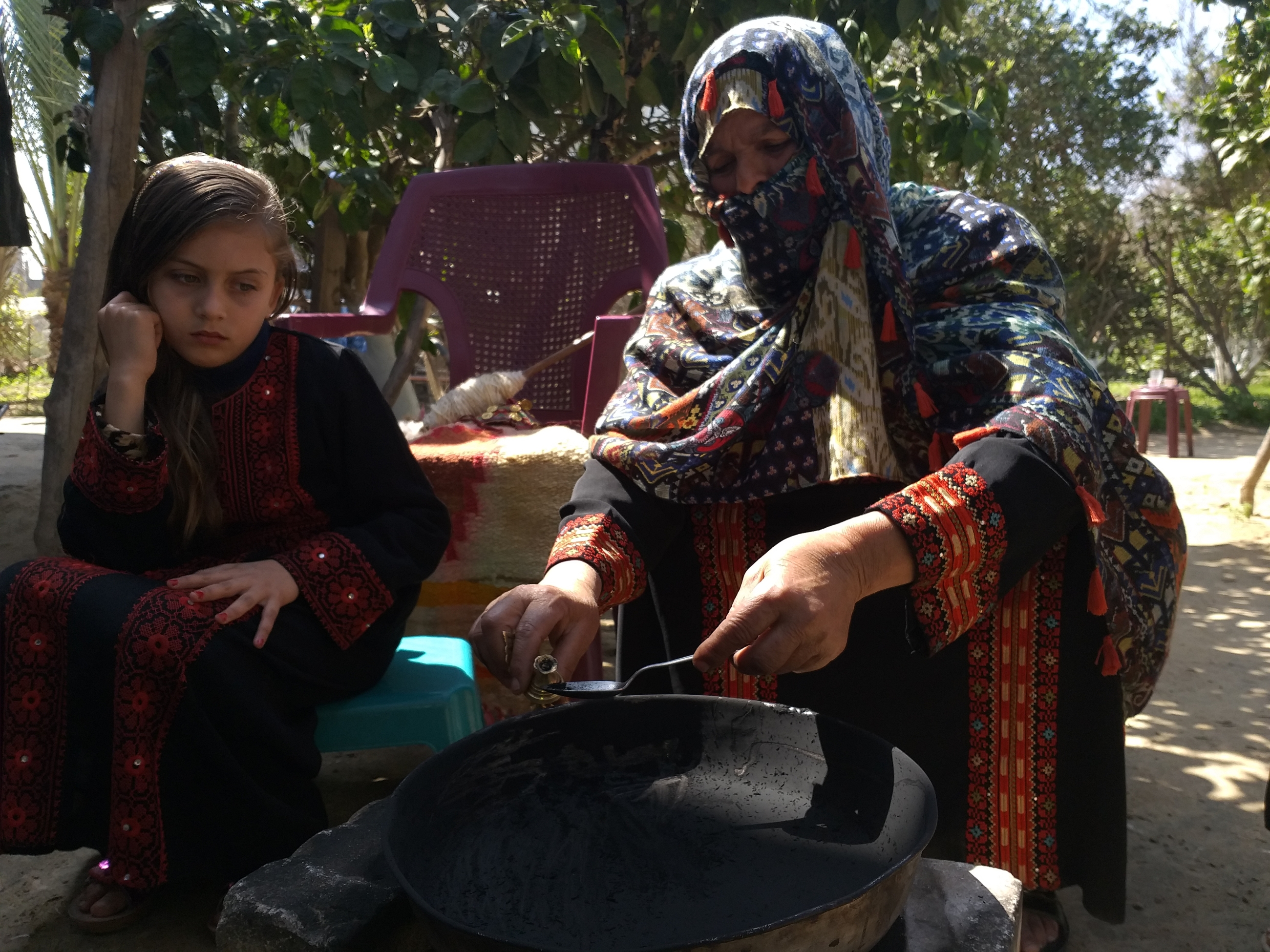
29-year-old makeup artist Nour Jihad says that kohl continues to be a popular choice. “Many of my customers prefer to use kohl because it is much darker and lasts longer,” Jihad told MEE. "But I don't recommend it in some cases... it's not safe to use if someone's got eye inflammation or has recently had eye surgery.” (Credit: Moneeb Saada)
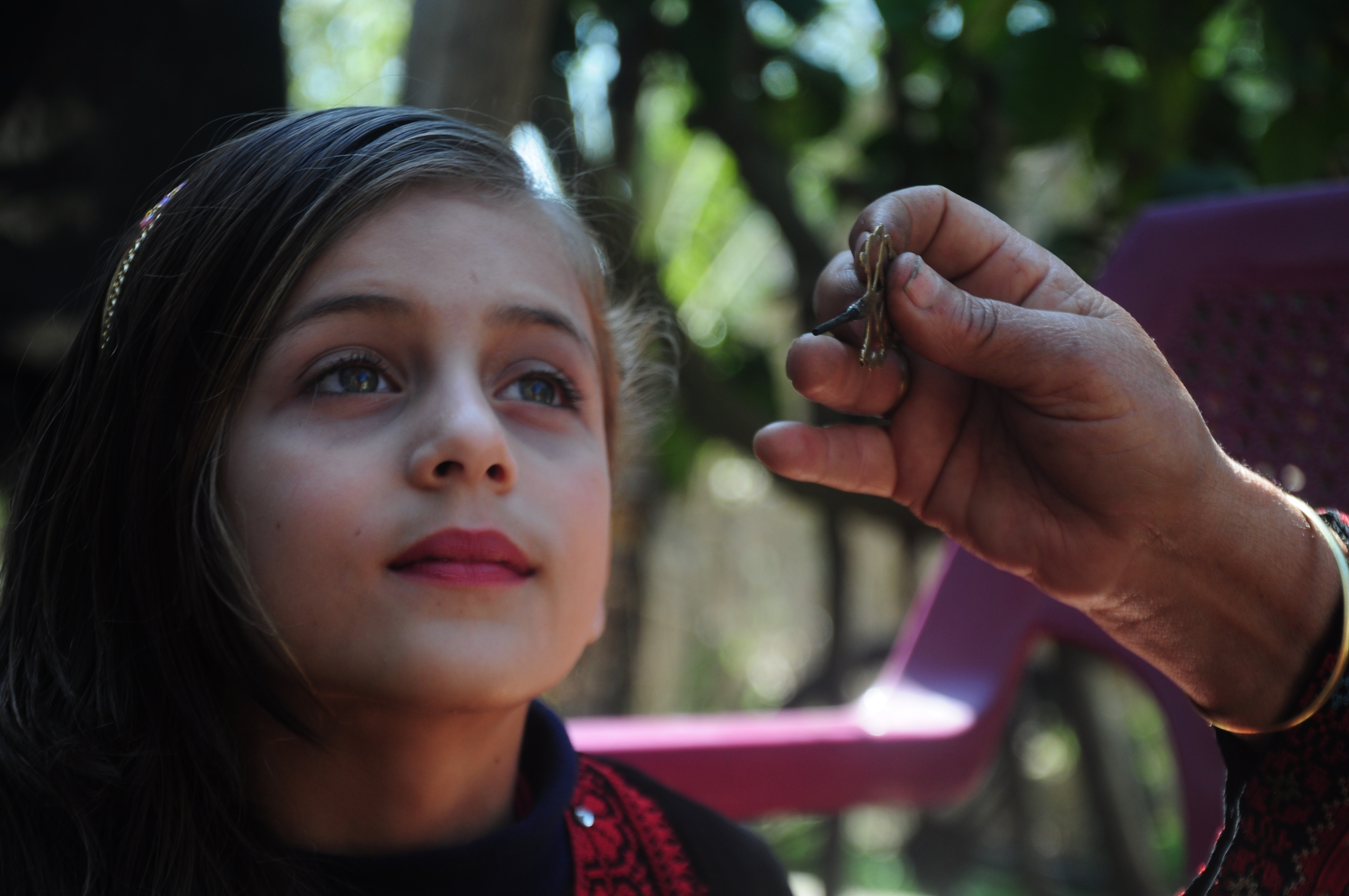
Qudeih, who has four daughters and four sons, says that she sometimes sells kohl to make a living and help her married sons cover their families’ expenses. After filling multiple kohl jars, Qudeih sends her son to the local market to sell it for 25 Israeli shekels ($7) per jar.
“Only the old generations know the real value of this traditional kohl and are willing to buy it; the new generations now depend on brands and eyeliners made of chemicals,” Qudeih told MEE. “But I'm always glad to see young women coming to me to ask for kohl. Whenever a girl or a young woman visits me, I tell her about its history, its benefits, and how good our days in the 60s were, when I first learned to make the kohl.” (Credit: Moneeb Saada)

“For me, Arab kohl is the beautiful history of my parents and grandparents, when we were happy and free,” Qudieh said. “It is as important as the Palestinian traditional dresses and songs, part of our social heritage." (Credit: Moneeb Saada)
This article is available in French on Middle East Eye French edition.
Middle East Eye delivers independent and unrivalled coverage and analysis of the Middle East, North Africa and beyond. To learn more about republishing this content and the associated fees, please fill out this form. More about MEE can be found here.


